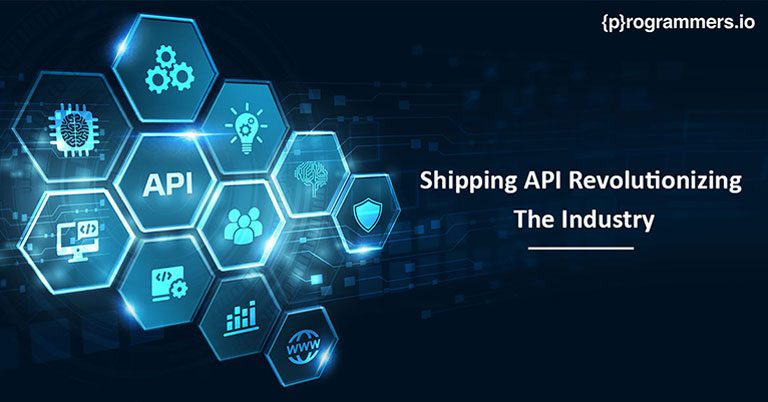An API or Application Programming Interface is a programming software that can help connect certain programs, platforms and software. Almost all platforms tend to have their own APIs, which perform designated functions. Businesses today run API integrations at work on different streaming websites, weather applications and social media platforms.
To give examples from mainstream media, Facebook utilizes API integrations for Messenger on its platform. The API helps run the chat and allows users to interact and communicate with one another. YouTube uses APIs to display videos on all third-party platforms. These APIs help run communication and build interaction. A number of applications today run APIs to perform certain actions and to show data to users.
In this article, we take a look at eCommerce shipping APIs and study the role that they play in eCommerce firms today. This article will include a mention of how these APIs have developed over time and the capacity they are used in globally.
How Shipping APIs Work
Shipping APIs are a common sight in the world of eCommerce today. Shipping APIs are designed to oversee and manage a number of things in the industry for logistics and delivery. Shipping APIs use different mechanisms to calculate delivery dates and to pass on the instructions to others.
The right use of shipping API and its integrations can help organizations maximize their order fulfilment rate, reduce the RTO numbers, and improve the satisfaction customers get from the service.
Shipping APIs carry significant importance today and should be among the first things you check when you are starting to work with a new partner. Understanding the functions performed by the shipping APIs can help educate both partners of what is to come.
Role of Shipping API
A shipping API will oversee the following aspects of the industry:
Send Tracking Updates to Customers
Giving customers the ability to track orders is something that differentiates all major supply chains from newer ones. Order tracking is definitely a treat that every supply chain operator would want their hands on. API integrations can help pull tracking data from different sources and pass it on to the end customer for efficient operations and updates.
Customers are notified as soon as every milestone on the way to delivery is crossed. Customers, hence, know when to expect delivery and whether the order is really on track or not. Additionally, API tracking integrations can also allow corporates to keep a stringent eye on their orders and make sure that they are passing every hurdle on time.
Order Creation and Generation of an AWB
Your interaction with a customer starts after they place an order on your website. You will be notified once a customer places their order on your e-commerce platform. Once the order is prepared and managed, it has to be finalized through a process identified as manifestation. The order generation process is followed by immediate integrations of numerous APIs.
The order creation process is automated through APIs, as all manual tasks are now performed automatically. Once you enter all order details, the API works on the information to generate the relevant AWB number. The AWB number (airway bill number) comes with a unique identification code, which can be used to track the order through its entire life cycle.
Displaying EDD
The API for displaying EDD springs into action even before the order has been finalized and put into play. The EDD display API helps push sales forward and gives customers incentives when shopping online.
The EDD API usually works on past order history to extract the pin-code data previously provided by a customer on the given ecommerce solution. The EDD process not only extracts past data, but also analyzes and studies past orders delivered to that pin location.
The analysis performed here helps the API calculate an estimated delivery date. As soon as the EDD results are calculated through the API, the final information is displayed for the customer to see. Customers can work on that info to get an idea of estimated delivery dates.
Managing Cancelled Orders
Shipping and eCommerce companies understand that cancellations are a part of the process that they cannot understate. Cancellation APIs offer effective methods for reverse logistics to manage orders that have been canceled. Cancellation APIs are put into business as soon as an API is canceled and reinforcement is required for it.
Once a cancellation request is put in, the API automatically tracks the location of the order and initiates the return journey for the product that has been canceled. The canceled product is then delivered back to the warehouse where its journey initiated from. The item is finally restocked and delivered to the end customer in its final shape.
Edit Orders
Customers want to edit orders that have been made in haste or require changing. Different edits can be made to order. Some people may want to change their delivery address, while others may want to change the number of items in the order. Each edit request is followed based on the edits that are required within it.
The API for editing orders ensures that all edits made to the order are ideally noted by the organization and are notified to the relevant shipping partners. Updating the information will make sure that the final guidelines are followed, and the delivery is made in time to the end customer.
Shipping APIs make shipments easier for ecommerce organizations today. We hope you can use the info in this article to know more about shipping APIs and how they make transactions easier.




